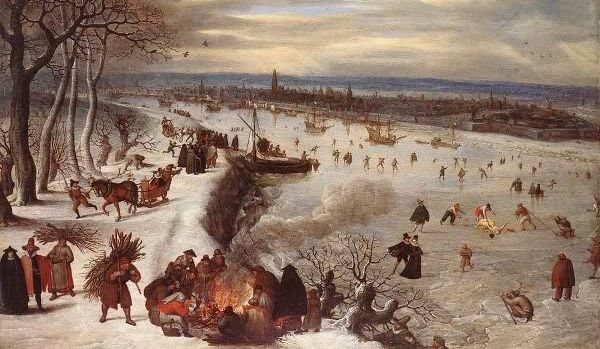The current winter starts the development of a new ice age
Last reviewed: 17.10.2021

All iLive content is medically reviewed or fact checked to ensure as much factual accuracy as possible.
We have strict sourcing guidelines and only link to reputable media sites, academic research institutions and, whenever possible, medically peer reviewed studies. Note that the numbers in parentheses ([1], [2], etc.) are clickable links to these studies.
If you feel that any of our content is inaccurate, out-of-date, or otherwise questionable, please select it and press Ctrl + Enter.
Scientists from the UK are confident that this winter the formation of the next small ice age begins.
Over the past few years, the winters have become warmer, which has given many reasons for concern about the threat of global warming. However, the scientific experts of the British University of Northumbria are confident that the unexpectedly cold winter of 2017 is not an accidental meteorological phenomenon, but a quite natural fact, and people need to prepare for the onset of a new small ice age.
According to scientists, the cooling will begin exactly from 2017 and will increase gradually, from year to year, reaching its peak minus temperature by 2030. Specialists associate this information with the slow decrease in the activity of the Sun, which for the next thirteen years will fall by about 60% of current activity.
"Blame" in the decrease in solar activity spots found on the sun. These spots, at their maximum concentration, previously led to an increase in the temperature indexes on our planet. At the moment on the surface of the Sun, scientists observe an unusually small number of such spots - this is the smallest concentration in the last century.
British scientific experts are unanimous in their opinion: the activity of the sun's lantern plays the leading role in shaping the climate situation on the Earth. All other factors are of secondary importance and are not able to significantly affect the bar of average annual temperature indicators on our planet.
Scientists from the UK admit that their assumption is not entirely innovative: in 2015, experts from Russia pointed out that the increase in atmospheric temperature on Earth can be temporary. They came to this conclusion after a careful study of the ground masses on the Chukchi lake Elgygytgyn, which was formed at least 3.5 million years ago after the meteorite fell onto this place.
For information: the last small glacial period was recorded on Earth in the period from 1645 to 1715. Such phenomena are cyclically repeated every 300-400 years. One should not confuse the usual glacial period with a short period: mankind will definitely survive, but it is necessary to be ready for a slow drop in temperature. Than it threatens?

During the last small glacial period, a record low yield was registered, the population literally starved. The number of snowfalls increased - even in countries where a priori snow was not observed. Freezing water in the Bosporus and the Adriatic Sea - this phenomenon is considered a climatic cataclysm.
However, along with such forecasts, it is also impossible to completely forget about global warming : human activity over the last centuries has made its changes in the composition of the atmosphere and, in particular, in the percentage of greenhouse gases. Therefore, natural natural processes in conjunction with the "contribution" of a person can lead to unpredictable consequences for the planet, which, of course, scientists will take into account in their subsequent studies.
